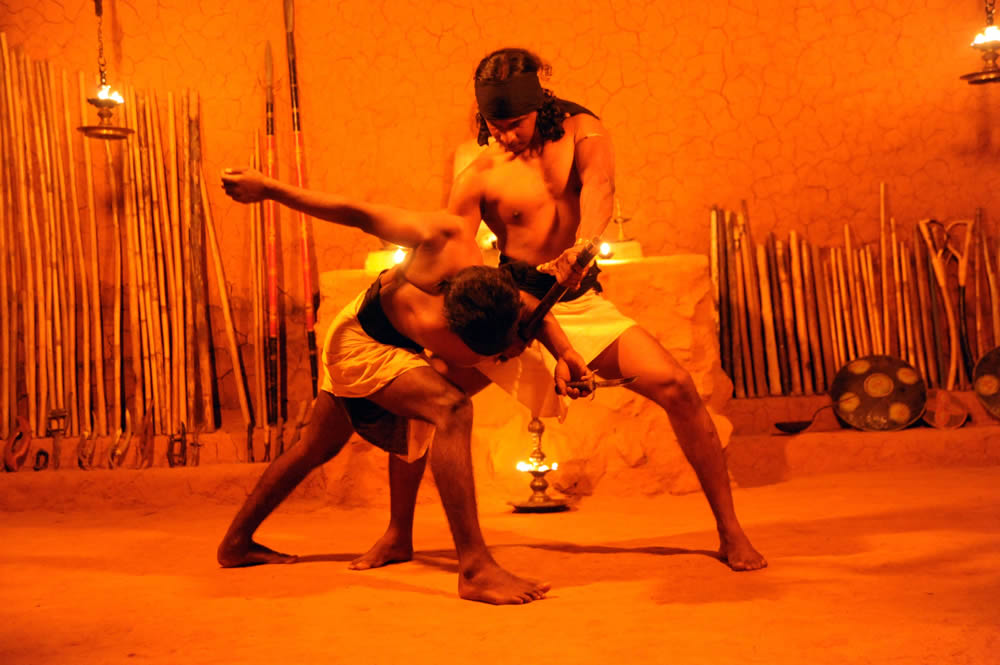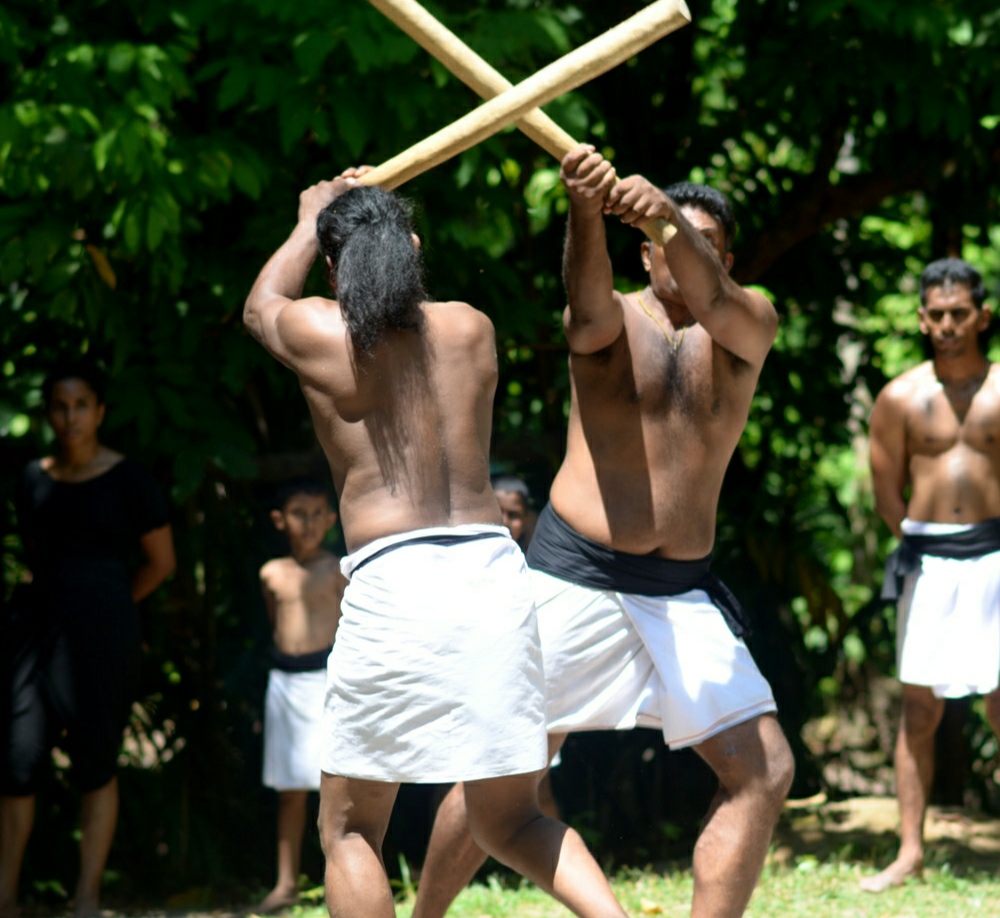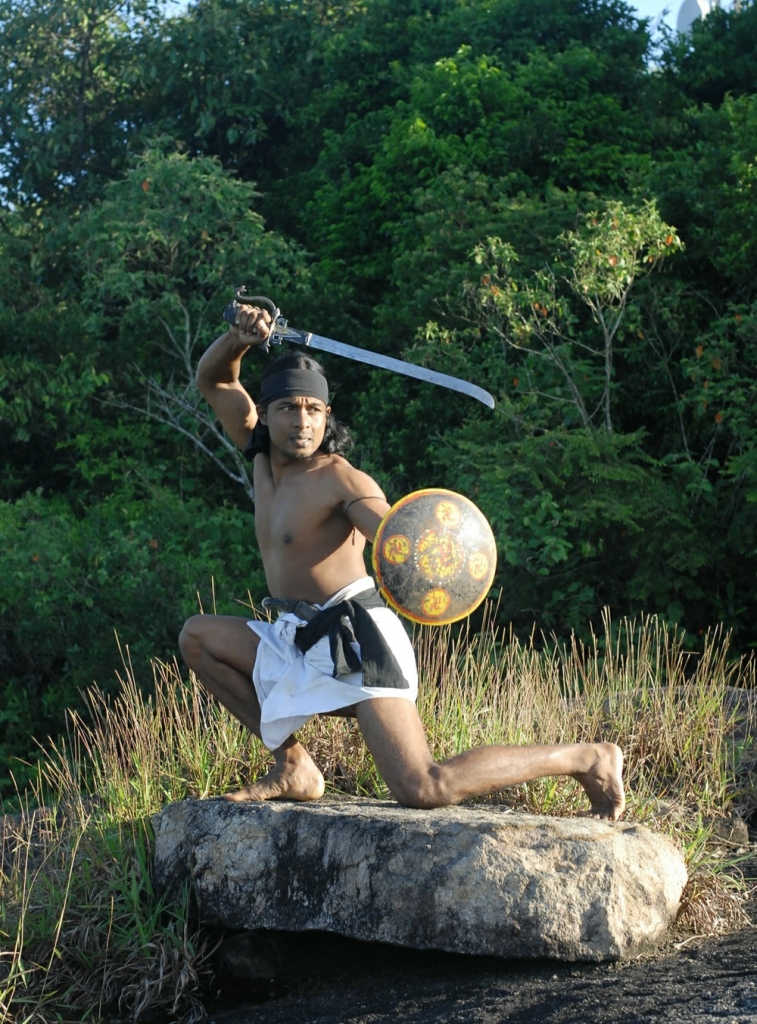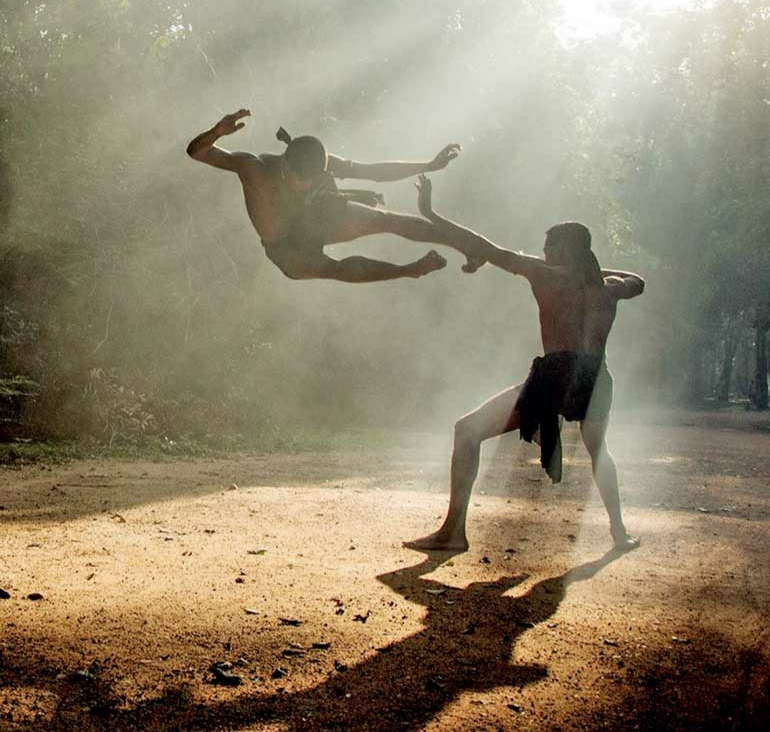Unique to Sri Lanka, Angampora, also known as Angam, is one of world’s most ancient forms of martial arts. Founded by King Mahasen of the Yakka tribe of ancient Sri Lanka, it is believed to have been a part of the ancient culture of Sri Lanka that dates back to over 33,000 years. Angampora is a deep, challenging and annalistic art of combat, that encompasses body, mind and soul and has evolved from generation to generation, standing the formidable test of time.
Following the Uva–Wellassa Rebellion in 1818, the then regime banned and outlawed the practice of this martial art, showing beyond doubt it’s fearful nature. In the outset of such times, most gurus held back from teaching. However a few warrior families that were dedicated to preserve the martial art along with their practitioners went underground, and practiced in secrecy within the rhythmic movements of Sri Lankan Traditional dance, concealing the combat art in plain sight. Hidden within the graceful bend of a knee or the flip of a hand was a deadly and effective technique of Angam. Carried throughout in secrecy from generation to generation for over 200 years.


The art encompasses techniques that include locks and grips, strikes and blocks, and foremost pressure point strikes (Maru Kala) that require a certain amount of power and speed that can cause great pain to the opponent, make him paralyzed, incompetent, swoon or give a quick death. It is also embedded with self-defense techniques, sports, exercises, meditation and techniques that use incantations and spells for strikes (Maya angam). Alongside these techniques there are also indigenous medical practices known as Beheth Paharawal (Medical strikes) which reverses the effects of such strikes.
Sri Lankan history has been marked by major battles, where brave native warriors fought a variety of invading forces and defended the land and its people. Ancient chronicles and more recent accounts of incidents that took place in colonial Sri Lanka, indicate that Angampora combat techniques were one of the key reasons for the success of the local warriors in battle, portraying Sri Lanka as a brave and fearless nation!


Today, this long forgotten martial art has been revived, and we have joined together with a school of practitioners with a proven lineage, to unravel this local “Shaolin” in the surroundings of the Ritigala Monastery – A definite add to your bucket list!
Source: ASTL team
